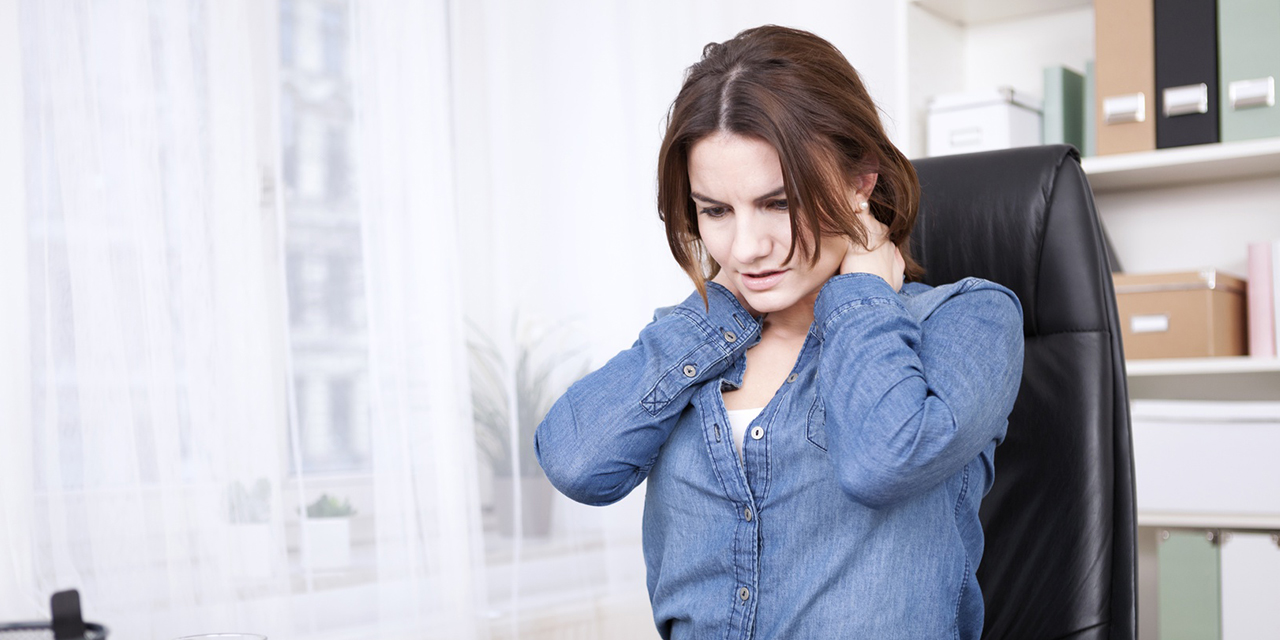Cervicogenic Headaches (Headaches Secondary to Neck Problems)

Sad woman hug her knee,nobody
Cervicogenic headaches (headaches secondary to neck problems)
Problems involving neck muscles, cervical soft tissue and/or the cervical spine (facet joint and disc) can cause headaches. Muscles, nerves, veins, bones, or joint involvement can lead to pain. The problem causing pain is usually located in the first three cervical vertebrae.
Cervicogenic headache can be caused by trigeminal nerve involvement. The spinal root of the trigeminal nerve carries the sensory and pain fibers of the face and meninges. Neck pain can also result from long-term sedentary work, long-term phone/tablet gazing, and/or long-term driving. These lead to muscle imbalance in the neck and back muscles and postural disorders (known as Upper-Crossed Syndrome).
Cervicogenic headaches are 2-3 times more common in females. Almost two percent of the population is affected. Twenty years ago, more middle-aged/elderly people were afflicted, but due to current technology addiction, more people are diagnosed from all ages, especially adolescents and young adults.
Symptoms-signs that you can have are:
- Headache (blunt; often bilateral, rarely unilateral)
- Nape pain
- Limitation of head/ neck movements
- Pain above/ behind the eye
- Facial pain
- Temporal pain
- Forehead pain
- Shoulder pain
- Temporomandibular pain in the morning
- Bad posture (upper-crossed syndrome)
- Kyphosis
If you have one of the following conditions or lifestyles, you are at increased risk to have cervicogenic headaches:
- Cervical spine degeneration
- Cervical spine aging, arthritis
- Cervical disc problems
- Cervical spine alignment problems
- Vertebral involvement in rheumatic diseases (rheumatoid arthritis, ankylosing spondylitis)
- Head/ neck trauma
- Motor vehicle accidents (whiplash injury)
- Non vehicle accidents (direct neck trauma, secondary trauma to fall, neck trauma along with head trauma)
- Head trauma (falling on the back, falling on the head)
- Problems of the neck muscles
- Fibromyalgia
- Bad posture
- Sedentary work
- Holding the neck in forceful positions (placing the phone between the head and shoulder while talking)
- Long-term viewing of hand held phone/tablet
- One-sided carrying of bags/purses
- Carrying a heavy backpack
- Migraine
- Tension type headache
- Temporomandibular disorders (TMD)
Physical Examination might reveal:
- Limitation of neck movements and pain on movement
- Pain aggravated by head movements
- Sensitivity in the neck muscles (spontaneously or with manual pressure)
- Trigger points in neck and shoulder muscles
- Tension in neck, back, and shoulder muscles
- Shortness in the neck and back muscles
- Weakness in the deep cervical flexor muscles (muscles that tilt the head forward)
- Triggering/aggravation of pain with pressure applied to the nape or neck
- Postural disorders (upper-crossed syndrome)
Treatment
- Exercise
- Posture correcting
- Core strengthening
- Neck stretching and strengthening
- Stretching and strengthening for upper crossed syndrome
- Low intensity whole body exercise
- Yoga
- Pilates
- Walking
- Tai chi
- Swimming
- Posture correcting
- Resolving sleep problems, observing sleep hygiene, correcting lying posture and arranging sleep environment (hard bed, low and soft pillow)
- Reducing caffeine consumption
- Nutrition
a) Sugar-free diet
b) Gluten-free diet
c) Paleo diet
d) Vitamin/mineral supplements
e) Probiotic treatment
- Learning to cope with stress
- Psychotherapy
- Cognitive therapy
- Meditation
- Breathing
- Fibromyalgia treatment, trigger point injection
- Physical therapy (TENS, manipulation, cryotherapy, laser)
- Bruxism treatment (night guard, Botox)
- Massage
- Medication
- Simple painkillers
- Muscle relaxants
- Antidepressants
- Antiepileptics
- Injection: Facet joint injection, trigger point/myofascial injection, occipital nerve block, Botox injection
- Acupuncture
- Other
- Stop carrying heavy bags/purses
- Don’t carry single-sided, heavy handling (purse, bag, baby)
- Sit in the proper position at your desk
- Feet and knees on the floor at 90 degrees
- Arm resting on chair armrests
- Shoulders back, sitting with upright back
- The monitor to be slightly below eye level
- The chair should support back
- Frequent breaks for those working at a desk; walk around or do stretches
- When talking on the phone, hold it with your hand and change the side you are talking to intermittently, or use headphones/Bluetooth; do not place between shoulder and head
- Reduce technology addiction; look at the phone for a short time, keep it close to eye level while using
- Protect the neck and shoulders and keep them warm in cold/air-conditioned environments
- Avoid wearing high heels/wear low heel shoes (since high heels put the body weight set point forward, the knees are bent to allow the body to stand upright, increasing the back and neck troughs, leading to neck pain)

